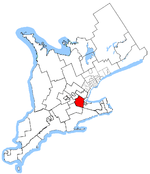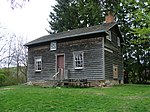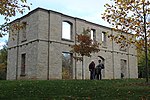Jerseyville, Ontario

Jerseyville is a dispersed rural community within the city of Hamilton, in Ontario, Canada. The community was initially known as Jersey Settlement, named by the United Empire Loyalist settlers from New Jersey who settled in the late 1790s. but was changed to its present name in 1852 when a post office was opened.Formerly an elementary school, general store, post office, train station and a motorcycle dealership. Jerseyville's former elementary school is currently home to Circus Orange, and the general store is home to Black & Smith Country General.The Brantford to Hamilton rail trail passes through Jerseyville in place of the old train tracks. The original Jerseyville train station building can be found at Westfield Heritage Village in Rockton.
Excerpt from the Wikipedia article Jerseyville, Ontario (License: CC BY-SA 3.0, Authors, Images).Jerseyville, Ontario
Union Street, Hamilton
Geographical coordinates (GPS) Address Nearby Places Show on map
Geographical coordinates (GPS)
| Latitude | Longitude |
|---|---|
| N 43.199166666667 ° | E -80.106111111111 ° |
Address
Union Street 20
L0R 1T0 Hamilton
Ontario, Canada
Open on Google Maps






